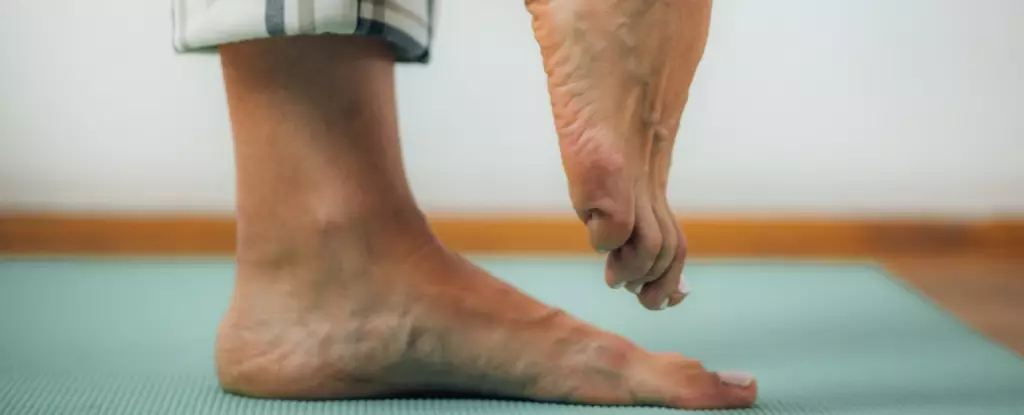Just a few years ago, the internet was buzzing with quirky challenges that pushed people to see how well they could navigate the intricacies of their physical abilities. Whether it involved rising from the ground without the use of hands or balancing on one leg while performing mundane tasks like brushing teeth, these light-hearted tests were interpreted as subtle indicators of our aging processes. However, we must ask ourselves, do these tests truly encapsulate the essence and complexity of aging?
Aging should not merely be quantified by physical metrics; it represents a multi-dimensional journey that encompasses emotional, psychological, and social dimensions too. Traditional references to “aging well” often lean heavily on these physical attributes, hovering over the idea of remaining in peak condition as one ages. Yet, the reality is much more intricate than mere physical endurance or the ability to complete a few household challenges. Plants don’t just need sunshine—they require water, soil, and the right environment to thrive, and our well-being follows a similar tapestry of needs.
Measuring Physical Abilities
Among the various physical assessments, walking speed is frequently highlighted as a reliable predictor of one’s health in aging. A well-known study outlines that individuals who can maintain a pace of over 1.32 meters per second may enjoy a longer life, humorously dubbed as being “too fast for the Grim Reaper.” Conversely, those trudging along at less than 0.8 meters per second may be at risk for sarcopenia—a loss of muscle mass and function indicative of an increasingly fragile health state. While these clues are helpful, relying on them poses challenges. Most of us are not equipped with the tools necessary to capture such specific metrics at home.
So the question arises: what realistic avenues do we have for tracking our aging journey? We need to expand our scope beyond the typical physical assessments to foster a more well-rounded perspective.
Cognitive Fitness: More Than Just a Numerical Value
Understanding one’s aging requires a close look at cognitive characteristics as well. Engaging in mental fitness assessments can reveal significant insights into our cognitive health. Simple cognitive challenges that not only entertain but also evaluate our mental agility can be attempted at home. For example, engaging in the Trail Making Test, where you connect numbers and letters, offers an informative look into your multitasking abilities. Similarly, the Stroop Task—where you identify the color of printed words rather than the words themselves—adds a layer of complexity to our assessment of cognitive function.
Yet, how do we gauge improvement in these domains? The results may fluctuate from day to day based on numerous factors, diluting our confidence in the outcomes. Whether it’s walking speed or the outcome of a Stroop Test, varying results might be misinterpreted as a decline in cognitive ability or physical competence. Measurements like grip strength can be slow to demonstrate progress, yet they are essential indicators of one’s physical strength.
It’s crucial to re-evaluate cognitive exercises periodically, perhaps on a monthly basis. Reassessing results across similar timelines can bring to light whether you’re genuinely improving or simply getting better at the tasks themselves. Moreover, recognizing that gains in one cognitive area don’t necessarily translate to improvements across the board—such as linking success in a cognitive flexibility test with performance in problem-solving tasks—should remain at the forefront of our assessments.
The Interplay of Emotional and Social Well-being
Beyond the physical and cognitive realms exists an equally significant, yet often neglected, aspect of aging: emotional and social well-being. How satisfied and engaged do we feel in our daily lives? Engaging in a self-assessment using tools designed to measure emotional well-being, such as the Scale of Positive and Negative Experience, may provide clarity.
This tool, while straightforward, taps into nuanced feelings that shape the way we perceive our quality of life—reflecting on joy, calm, sadness, and frustration. Herein lies the truth: simply performing well on physical or cognitive tests doesn’t equate to a rich, fulfilling life. One can measure and improve walking speed or memory recall, but if an individual feels isolated or discontent, their aging experience diverges from the holistic ideal of “aging well.”
The essence of aging gracefully lies not in the ability to pass tests or achieve milestones but rather in cultivating a keen self-awareness about our bodies, minds, and ultimately, our values. Creating a conducive environment for personal well-being asks us to engage with our emotional and cognitive selves, recognizing that they play substantial roles in our overall experience of aging.
In the grand narrative of life, perhaps the most critical question reframing our view on aging is not about speed or agility but revolves around introspection. Are we feeling connected, fulfilled, and certainly, engaged with the world around us? As you embark on activities—whether standing on one leg or performing cognitive exercises—never lose sight of the deeper, interconnected layers that contribute to living a genuinely rich life.


Leave a Reply